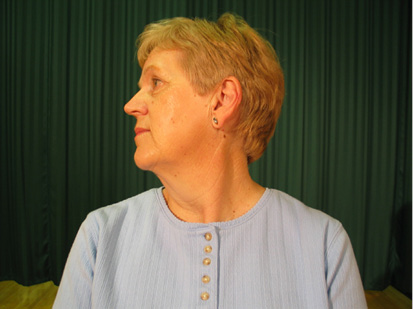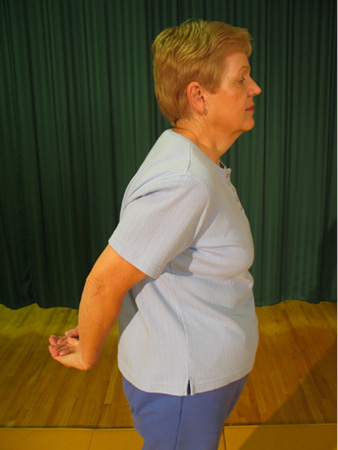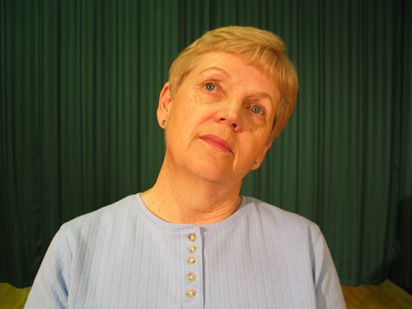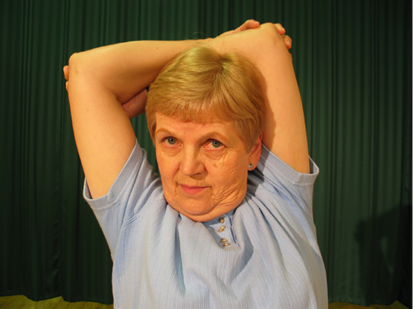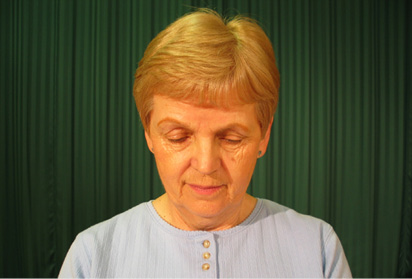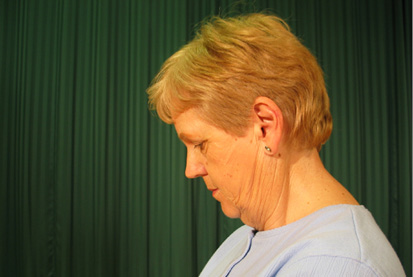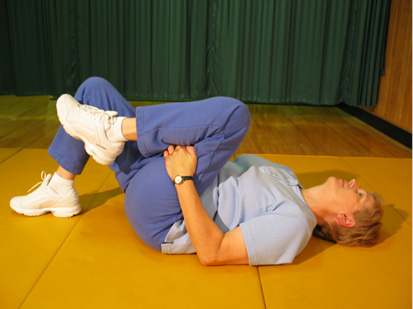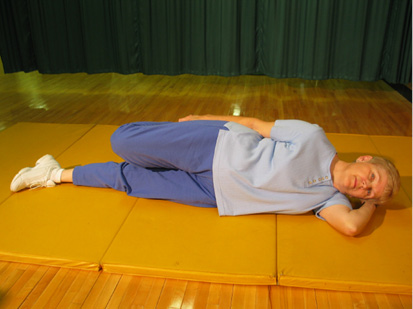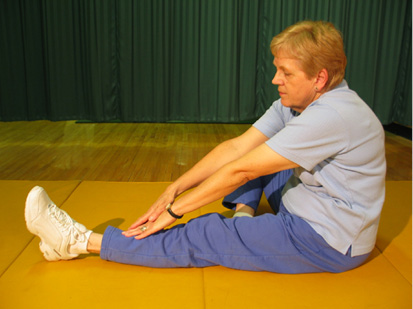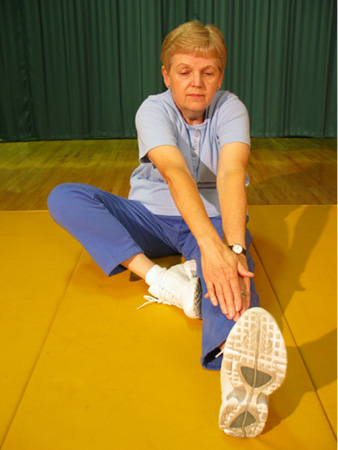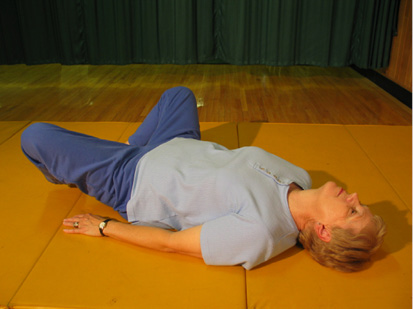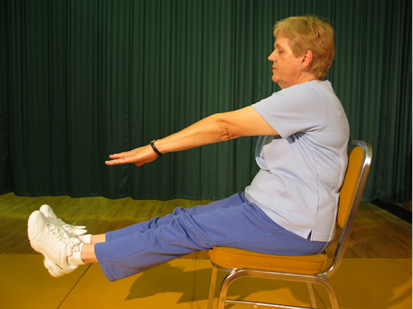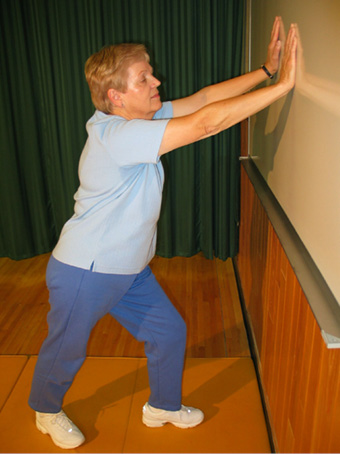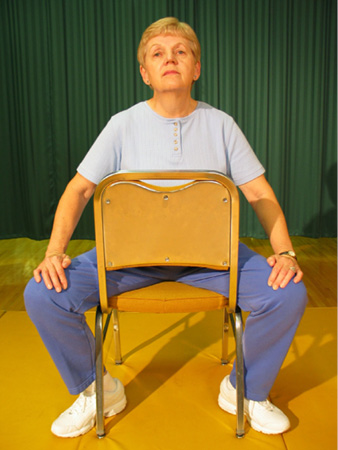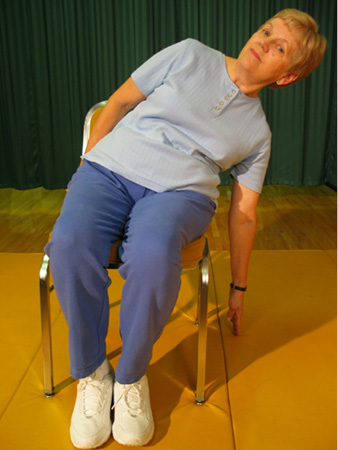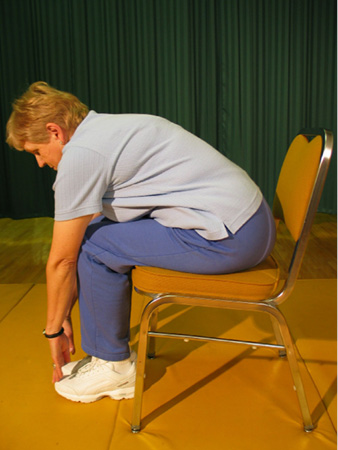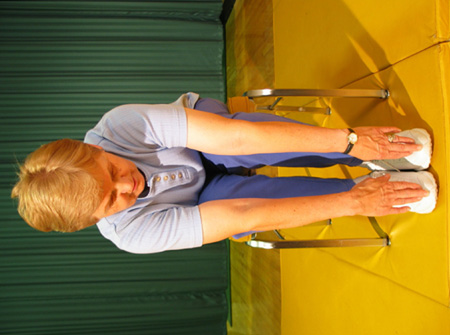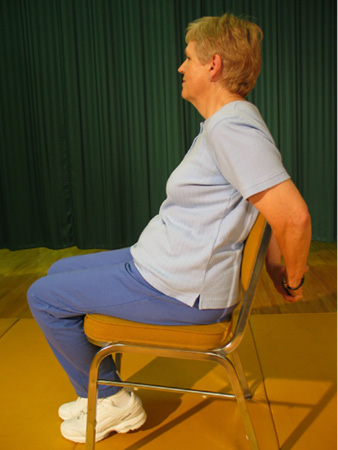1. To stretch neck muscles: Sit straight. Turn head to left as far as it will go and hold six seconds. Turn head to right as far as it will go, and hold six seconds. Repeat sequence four times.
2. To stretch shoulders and pectoral (chest) muscles: Clasp hands behind back and straighten arms as much as possible. Move arms away from back, keeping chest and head up. Hold for six seconds. Return arms to start position and relax for six seconds. Repeat four times.
3. To stretch neck muscles: Sit or stand straight and lower left ear to left shoulder. Hold six seconds, then relax and repeat on right side. Repeat sequence four times.
4. To stretch back of arm: Sit or stand straight. Grab one elbow with the opposite hand and gently pull your elbow behind your head. Hold for six seconds, then relax. Repeat twice.
5. To stretch back of neck and shoulder muscles: Sit or stand straight. Tuck chin in and down to chest. Keep chin down and try to pull head back. Hold for six seconds, then relax. Repeat four times.
Front view
Side view
6. To stretch upper hamstring and buttock muscles: Lie flat on the floor, face up. Place foot flat on floor. Bring knee of other leg to chest. Grab leg just behind the knee with both hands and pull knee toward your chest. Don’t strain. Feel an easy stretch and hold for six seconds, then relax for five seconds. Switch legs. Repeat twice for each leg.
7. To stretch quadriceps (front thigh): Lie on your side and grab top foot. Pull foot toward thigh and buttock. Hold for six seconds, then relax for five seconds. Roll over to opposite side and do exercise with other leg. Repeat twice for each leg.
8. To stretch hamstring muscles (back thigh): Sit on floor. Straighten right leg and bring sole of left foot to rest next to inside upper part of straight leg. Lean slightly forward with arms and hands extended toward ankle of straight leg. Find an easy stretch, hold for six seconds, then relax for five seconds. Repeat three times for each leg. To help you stretch down, place a towel around foot of straight leg. Grasp ends of towel and pull.
Side view
Front view
9. To stretch groin: Lie flat on the floor, face up. Relax with knees bent and the soles of your feet together. Push lower back toward floor. Hold for six seconds, then relax for five seconds. Repeat twice.
10. To stretch hamstrings: Straighten legs out in front, level with chair seat. Reach toward toes. Hold, relax, repeat. Watch your balance!
11. To stretch the gastrocnemius (calf): Stand two to three feet away from a solid support and, with arms and hands extended, lean against it. Bend one leg and place foot on floor in front of you, leaving other leg straight behind you. Slowly move your hips forward until you feel a stretch in calf of straight (back) leg. Be sure to keep heel of foot of straight leg on floor with toes pointed straight ahead. Hold for six seconds, then relax for five seconds. Switch legs. Repeat twice for each leg.
12. To stretch groin: Sit backward on the chair, straddling the back to stretch legs. Using hands, gently spread legs further apart. Hold, relax, repeat. (Or sit normally in chair and spread legs to exercise.)
13. To stretch trunk: While sitting, bend right side over and touch floor with right hand. Hold.
14. To stretch lower back and hamstrings: Sit straight in chair. With knees together, bend forward and stretch toward the floor (or toes). Hold. Return to original position. Avoid this and other bending-over exercises if they make you dizzy.
Side view
Front view
15. To stretch trunk: With arms out to the side, level with shoulders, shift shoulders sideways to right. Hold. Stretch to left. Hold. Don’t bounce!
16. To stretch shoulders: Sitting straight, wrap arms around chair back. Pull backward away from chair back. Relax and repeat.
